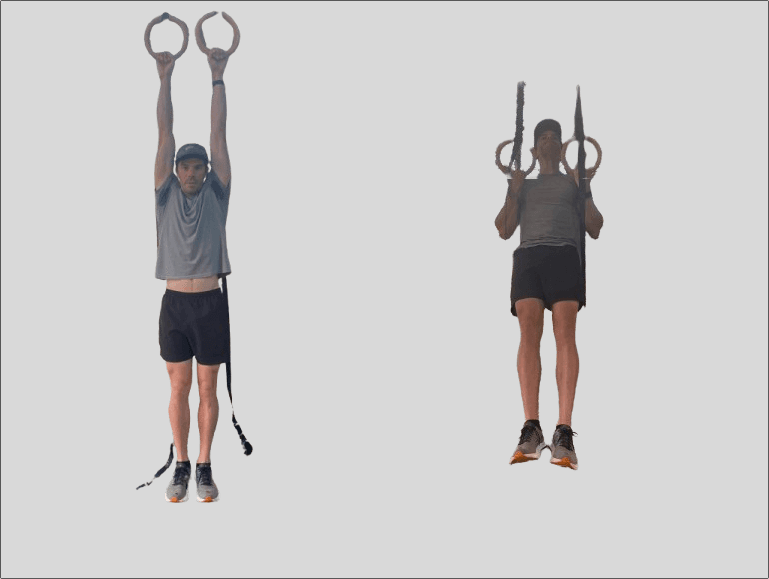
Calisthenics Challenge: 10 Consecutive Pullups
Published: Sep 8, 2025
In this fitness challenge I trained to be able to do 10 consecutive full range of motion pull-ups.
Pull-ups are a staple exercise in almost every serious strength training program. Pulling strength is essential for so many sports and physical activities. They are a staple of military personnel, rock climbers, calisthenics and gymnastics athletes, and for anyone else looking to improve their pulling strength. They build the lat muscles, biceps, upper back, and forearms, making them popular with people concerned with bodybuilding aesthetics. But they are also incredibly functional as they build your grip strength and your capacity to pull yourself up to climb upon things.
Being able to do 10 consecutive full range of motion pull-ups is a fitness standard that I’ve seen mentioned by several fitness influencers.
The kneesovertoesguy lists 10 full range of motion pull-ups as one of his fitness standards for a healthy, strong, and balanced upper body, more resistant to injury and ready for what the world can throw at it.
Tom Merrick lists 10 pull-ups as one of the fundamentals skills in calisthenics needed to form a foundation for more advanced skills like one arm chin-ups and handstand pushups.

I performed the challenge on gymnastics rings. Rings are a cheap accessible tool that are extremely versatile, particularly for building upper body strength. They offer an extra stability challenge over something like a fixed pull-up bar because they hang freely down from where they are attached.
Unlike a fixed bar, rings can move freely, rotate, and be adjusted to different heights. The free movement and rotation can be helpful for shoulder health. This is why the kneesovertoesguy (who is focused on injury prevention) does his pull-ups on rings.
Here is a video of me doing 10 consecutive full range of motion pull-ups:
I used the "grease the groove" method to train for 10 pull-ups on the gymnastics rings. Grease the groove basically involves doing a high volume of sub-maximal sets of an exercise. The idea is to train your nervous system to get better at the skill of the movement pattern and to accumulate as many reps as you can over a certain amount of time. Doing the sub-maximal sets of "grease the groove" with plenty of rest ensures that your form remains good, prevents exhaustion and burnout, and helps you avoid injuries.
I wanted to make sure that my form was good, so I trained by engaging my scapula before initiating the pull up and by pausing at the top of the rep. I did a complete dead hang at the bottom. Here is a video that demonstrates the kind of form I aspired to:
In the course of training my pull-up strength, I would throw my rings over a tree limb in my backyard and hit around a 50% max effort (5 or 6 reps) about 6 or 7 times a day. I would do this about 3 times per week. The rings carved calluses on the skin of my hands after several sets and reps, particularly at the tops of my palms and on my fingers. My forearms got pumped and vascular after doing these workouts.
I trained like this for about a month until I felt confident that I had built a solid level of skill and strength with my pull-ups. I tested my max and reached my goal of 10 consecutive full range of motion pull-ups with good form.
Training the grease the groove method seemed to work. I felt healthy and enthusiastic for the most part. But I did have some minor aches and pains during the course of training for this. Hammering away at this exercise gave me some mild tendonitis in my right elbow and some right upper trap low level pain, just like the dips did. I think I need to work on balancing out my shoulders and upper body to prevent these pains on my right side in the future.
Now that I’ve trained a basic fundamental level of calisthenics upper body strength, I want to work on progressing to ring muscle ups. Ring muscle ups require combining the pull-up and dip skills and strength that I’ve been working on thus far in my calisthenics journey. To do a ring muscle up you perform an explosive pull-up, transition above the rings to where you can perform a dip, and then push your arms to full extension. This advanced exercise combines pushing and pulling, and is a signal that you have excellent bodyweight strength to climb upon and over things.
I'm excited that I've built some solid foundational pulling strength with this pull-up training, and I am eager to keep expanding my capabilities into more advanced calisthenics skills like the ring muscle-up.